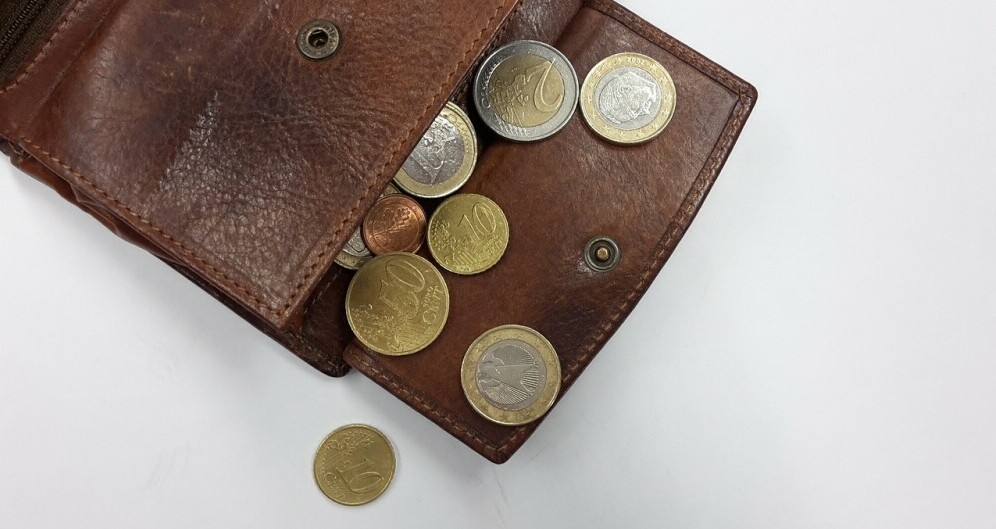Imagine this: your digital currency, tucked away in a vault so secure, that not even the most skilled hackers can pry it open. That’s essentially what a hardware wallet offers you. Simply put, a hardware wallet is a physical device that stores the access keys to your cryptocurrency offline. Think of it as a USB drive, but armed with a treasure chest of security features to safeguard your digital wealth from the virtual high seas of the internet.
Now, you might be asking, “How does this differ from, say, a software wallet or an account on a crypto exchange?” Well, that’s a great question. Unlike the conventional methods that store your access keys online or on devices that are frequently connected to the internet, a hardware wallet keeps them offline, away from the sight and reach of cyber-thieves. It’s like comparing a bank vault to a home safe; they both store valuables, but the level of security is leagues apart.
In today’s digital age, the necessity to protect our online assets is at an all-time high. Cryptocurrencies, in particular, have become a hotbed for cybercriminal activity due to their anonymous nature and the irreversibility of transactions. By choosing a hardware wallet, you’re taking a critical step towards cementing the safety of your digital assets in a world where digital theft is relentless.

Choosing a hardware wallet isn’t just about security, though. It’s also about peace of mind. Knowing that your investments are on lockdown and accessible only when you decide to connect your hardware wallet to a computer, gives you the control that’s often missing in the digital space. With that kind of power in your hands, you’re ready to explore the enhanced security measures these gadgets employ, which is what I’m going to detail in the next segment.
Enhanced Security: How Hardware Wallets Protect Your Wealth
I’m going to get straight to the point about one of the main reasons you’re considering a hardware wallet: security. These devices are like personal vaults, keeping your crypto assets secure from the digital wilds. The first thing you need to know is how they provide a protective barrier that other storage methods just can’t match.
Here’s a fact that might surprise you: the real deal in cryptocurrency security is all about the private keys. These keys are what offer you exclusive access to your assets. Hardware wallets ensure these keys are generated and remain offline, making them practically unreachable to online threats. It’s a simple yet effective fortress for your digital gold.
You might be wondering, ‘How does offline storage really make a difference?’ Well, by being disconnected from the internet, hardware wallets are immune to a range of attacks that plague online storage, such as phishing, malware, and unauthorized remote access attempts. This is what we call ‘cold storage’ – your crypto is stored in a way that’s not ‘hot’, or connected to the internet, at all times.
Let’s look at some names you’re likely to come across in this space. Trezor and Ledger stand out as industry leaders, renowned for their robust security measures. These include sophisticated PIN codes, and optional passphrase entry, alongside secure chip technology. Picture this: even if someone physically accessed your wallet, without the unique PIN, it’s as useful to them as a chocolate teapot.
By now, you’re getting the picture of how pivotal hardware wallets are in securing your crypto assets. But the story doesn’t end there. In the next section, we’re looking at best practices for using hardware wallets. After all, even the strongest vault is only as secure as its gatekeeper. It’s crucial to know the ins and outs of handling these devices to tighten that security loop.
Best Practices for Using Hardware Wallets Safely
Setting up a hardware wallet might seem challenging at first, but I’m here to walk you through the process. To start with, you’re going to need to choose a device from a reputable manufacturer like Ledger or Trezor. This is crucial because your device is the keeper of your private keys, the alphanumeric strings that grant you access to your crypto.
Once you’ve got your hardware wallet, it’s all about initialization and backup. I’m talking about creating a strong PIN code, writing down the recovery phrase (also known as a seed phrase) that’s generated during the setup, and storing it securely. Misplace this, and you might as well say goodbye to your assets if the device gets lost or damaged.
Regular maintenance is key. Just like you’d update your smartphone or computer, you should ensure your hardware wallet’s firmware is regularly updated. This keeps security tight and introduces new features that’ll enhance the user experience. Don’t worry too much about the technical stuff if that’s not your jam; just follow the manufacturer’s guidelines, and you’ll be just fine.
Finally, let’s touch on the absolute must-dos and the definite don’ts. Don’t store your recovery phrase digitally or online since that defeats the purpose of offline security. Do choose something that resonates with you for the recovery phrase’s physical storage whether that’s a safe deposit box, a fireproof safe, or a secret spot only you know. And remember, your first attempt doesn’t need to be your last; you can always adjust your approach down the road.
Now that you’ve got the down-low on keeping things secure, I bet you’re curious about where hardware wallets are headed. Stick around, because next, we’re diving into the exciting future of these nifty little devices.
The Future of Hardware Wallets: Trends and Innovations
Hardware wallets have come a long way since their inception, evolving from rudimentary devices to highly sophisticated security gadgets. I’m going to highlight the path they’ve been carving out in the tech world and how that’s set to change the landscape of digital asset security.
There’s been a significant leap in hardware wallet technology recently. Biometric security, wireless connectivity, and even multiple currency support are becoming standard features. Imagine unlocking your crypto vault with just a fingerprint or a retina scan!
In the realm of blockchain, compatibility is key. Hardware wallets are no longer standalone vaults; they’re integrating with broader blockchain ecosystems. You’re going to find out about wallets transforming into universal interfaces for decentralized applications (DApps), exchanges, and even NFT platforms.
Now what is particularly exciting is the progressive integration of hardware wallets with everyday technology. The possibility of connecting your hardware wallet directly to smartphones and other smart devices hints at a future where accessing your digital wealth could be as commonplace as using a banking app.
Wrapping up, it behooves us to keep an eye on where the journey of hardware wallets is headed. With advancements such as enhanced multi-factor authentication and cross-platform functionality, we’re not just looking at an era of tighter security—it’s about seamless access and management of our digital assets. Choose a hardware wallet that resonates with you now, but stay tuned for the innovations that tomorrow may bring to your digital doorstep.

Hi!
Great post! You’ve really highlighted the critical role hardware wallets play in securing cryptocurrency assets. The analogy of a bank vault vs. a home safe perfectly illustrates the difference in security levels between hardware wallets and other storage methods. I appreciate the detailed explanation of how these devices protect private keys by keeping them offline, which is a crucial aspect of safeguarding against online threats. The mention of industry leaders like Trezor and Ledger, along with their robust security features, is particularly useful for those considering a hardware wallet.
One question that comes to mind is: How do hardware wallets handle updates and security patches, and what should users do if they encounter issues during this process?
– Scott
Hi Scott,
Thank you for your kind words! I’m glad you found the post informative and that the analogy resonated with you.
Hardware wallets are indeed crucial for securing cryptocurrency assets, and it’s important to understand their mechanisms and features. Regarding your question about updates and security patches:
Most reputable hardware wallet providers, like Trezor and Ledger, regularly release firmware updates to enhance security and add new features. These updates are critical as they often address vulnerabilities and improve overall device performance.
Here are a few steps users should take when handling updates and security patches:
1. **Follow Official Guidelines**: Always follow the instructions provided by the wallet manufacturer. These can usually be found on their official website or support pages.
2. **Backup Your Recovery Seed**: Before updating, ensure you have a secure backup of your recovery seed. This will allow you to restore your wallet if something goes wrong during the update.
3. **Use Official Software**: Only use the official software or apps provided by the wallet manufacturer to perform updates. Avoid third-party tools to minimize risks.
4. **Stay Informed**: Subscribe to the manufacturer’s newsletter or follow their official channels for the latest news and update alerts.
If you encounter issues during the update process, here’s what you can do:
– **Consult Support**: Reach out to the manufacturer’s support team for assistance. They can provide step-by-step help.
– **Community Forums**: Check community forums or social media groups. Other users might have faced similar issues and can offer solutions.
– **Double-Check Instructions**: Ensure you are following the update instructions correctly.
Staying vigilant and keeping your hardware wallet’s firmware up to date is a key aspect of maintaining the security of your crypto assets.
#Cryptocurrency #HardwareWallets #Trezor #Ledger #CryptoSecurity #FirmwareUpdates
Best regards,
Gary S